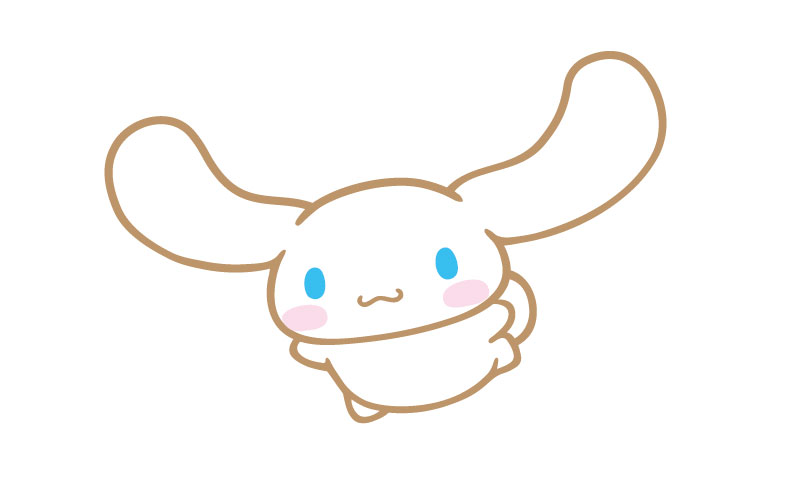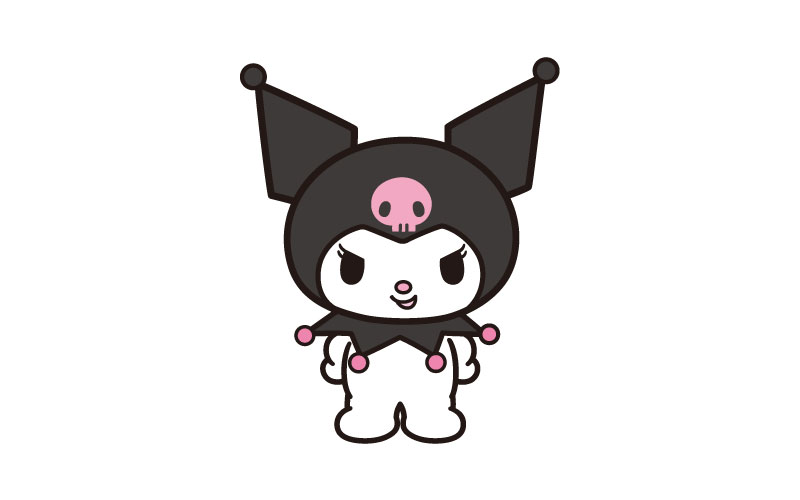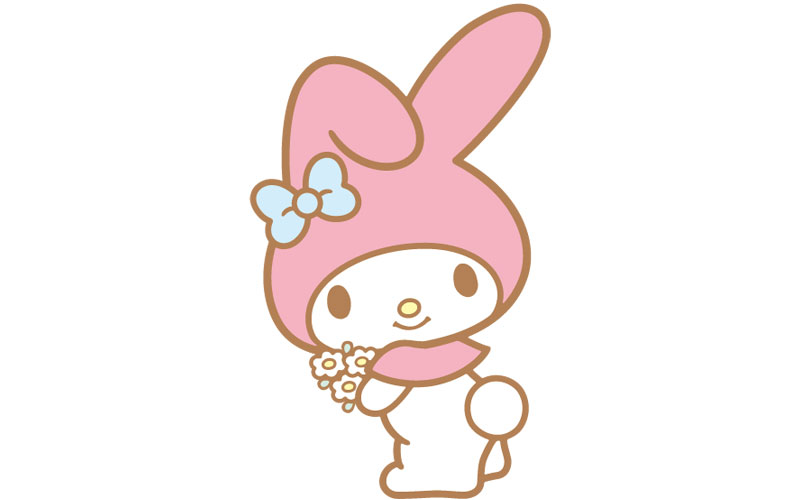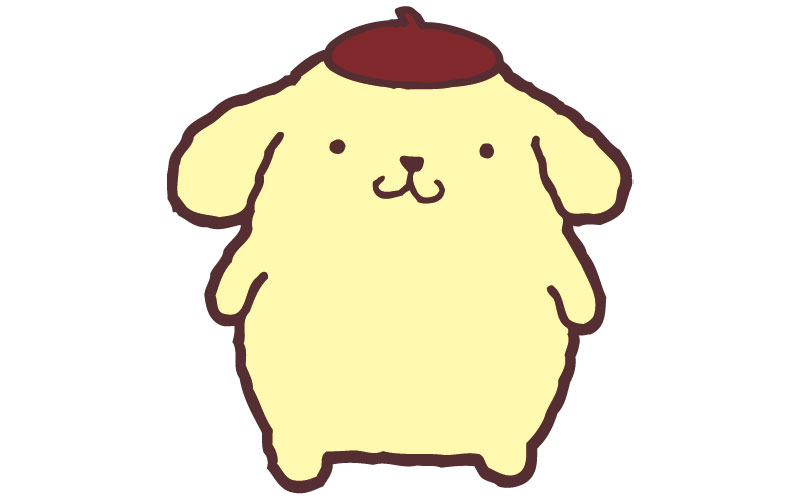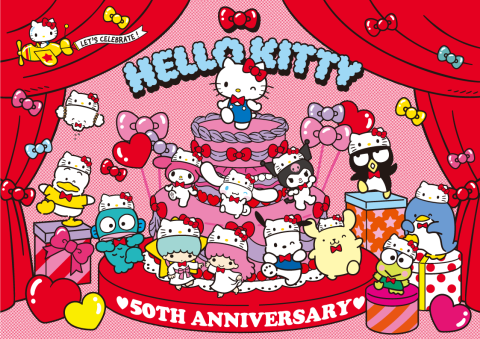
© 2024 SANRIO CO.,LTD.
Fifty years ago, a little girl with a red bow captured the hearts of people all around the world. Today, Hello Kitty is one of Japan’s most beloved cultural symbols, an emblem of creativity, community, and yes, cuteness, that has joined the pantheon of global pop culture. She’s appeared on everything from lunchboxes to airplanes, in theme parks and movies, and even collaborates with the United Nations to promote sustainable development. Hello Kitty has been associated with kawaii (cute and adorable) culture and aesthetics, and so naturally is included as part of JAPAN HOUSE Los Angeles’ current exhibition, “Yes, KAWAII is Art -EXPRESS YOURSELF-.” As the character celebrates her 50th anniversary, join us for a tour through the history, evolution, and complex meanings of a character whose seeming “simplicity” has endeared her to the world.
Hello Kitty was created by Sanrio, a Japanese company originally founded in 1960 by Shintaro Tsuji as the “Yamanashi Silk Center Company,” to establish a social communication business. As its background, the 1950s and 60s saw a growth in manufacturing activity in sync with Japan’s postwar recovery, as well as in the market for consumer goods – especially those targeted toward young people. An innovative and observant entrepreneur, Tsuji experimented with painting flower motifs on a pair of sandals, which then sold far better than the plain models. He refocused his company on social communication, producing cute designs and original characters. In 1973, the company rebranded as “Sanrio,” derived from the Spanish words “san,” meaning saint or sacred, and “rio,” meaning river – one touch of internationalism among many. The company’s designers got to work dreaming up a variety of characters, and though “Coro Chan” (Korochan), a “laid-back bear” debuted ahead of Hello Kitty, it was this creation that launched Sanrio into stratospheric success.
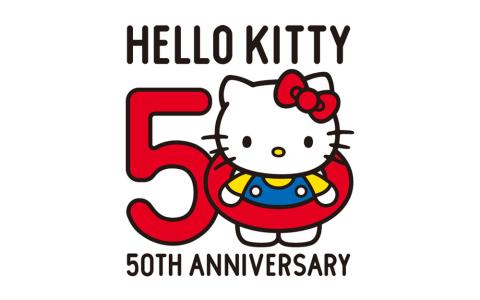
© 2024 SANRIO CO.,LTD.
In 1974, the decision was made to create an original character based on animals popular in greeting cards, leading to the birth of Hello Kitty. The first product, part of a line of small vinyl coin purses called “Petit Purse,” which were popular at the time, was released in 1975. However, it only had the word “HELLO” and the character depicted did not yet have a name. Because this Petit Purse sold well compared to other designs, it was named Hello Kitty, marking its official debut. Ever since, the character profile and backstory has been expanded to cater to an ever-growing audience.
First and foremost, it might surprise you to know that the Hello Kitty character is not a cat, not a Japanese resident, and not originally named Hello Kitty. According to the character profile created by Sanrio, she’s a girl who lives in the suburbs of London, named “Kitty White.” Sanrio chose to give her a British background to plug into the trendiness of everything British in Japanese youth culture at the time. Hello Kitty’s biography includes a twin sister, Mimmy, and parents Mary and George White, and a boyfriend named Daniel Star, anchoring her in a relatable, domestic setting. Of course, the realism only goes so far: Hello Kitty is also noted to be “as tall as five apples,” and perhaps most famously, depicted without a mouth.

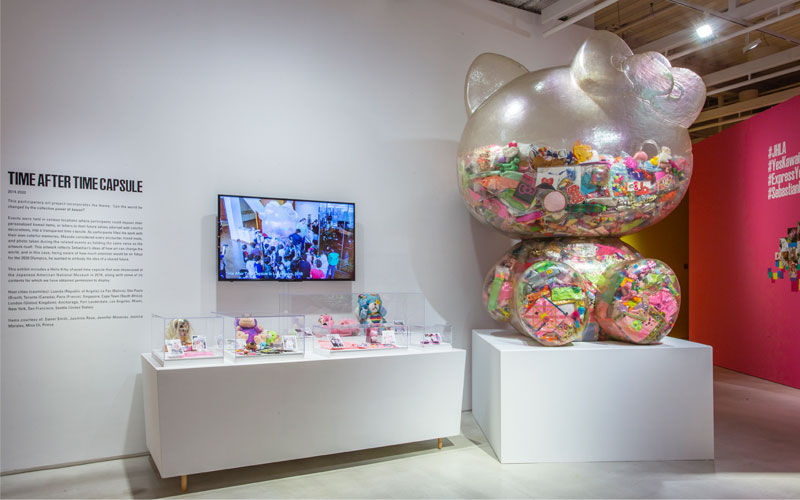
This is part of what makes Hello Kitty so original, so kawaii, and on occasion, a bit controversial. As Hello Kitty evolved, she was intertwined with the development of contemporary kawaii culture in Japan and bringing the concept to the world stage (read more about the history of kawaii and how it’s explored in the current exhibition in an article here). As it is presented in the current exhibition, while the current meaning of kawaii has many layers and can connote colorful aesthetics as well as a specific global community, the original meaning of the word kawaii not only signifies something adorable but also conveys a sense of fragility, helplessness, or needing protection. Psychologists argue that this encapsulates the essence of “cuteness” as recognized worldwide – it evokes a nurturing response from the observer towards features that are “baby-like,” potentially serving as an evolutionary cue to care for those that are defenseless and dependent (such as infants).
Hello Kitty’s depiction, from her large head, round eyes, small body, and delicate hair bow, all make her appear sweet, making us feel close in the process. Hello Kitty’s design choice contributes to her universal appeal, giving her fans space for their own moods, diverse interpretations, and chances for empathy, kindness and connection. For the 1980s cartoon film “Kitty and Mimmy’s New Umbrella,” she was redesigned, but fans firmly rejected the change, and it was changed back to make her the character they already knew and loved.
From the 1980s onwards, Hello Kitty mania began to sweep the world, as Sanrio products made inroads in the global market and diversified to entertainment, cafes, and theme parks. In Sanrio’s own products from clothing to kitchen appliances to videogames, and in numerous crossovers and collaborations with globally recognized brands such as the international airline Eva Air, Hello Kitty has remained cute, friendly, and welcoming. Even as kawaii pop culture went through its own expansions and transformations (as documented in the current exhibition; take a virtual tour or plan your visit here), Hello Kitty never went out of style, but instead shape-shifted along with the style. As an example, Sanrio recently created a special-edition Hello Kitty doll based on a real person – the instantly popular “yoshikitty” doll inspired by international musical icon and JAPAN HOUSE Los Angeles official advisor YOSHIKI (read more on the collaboration, and see a selection of “yoshikitty” dolls on display at the current exhibition). As Sanrio celebrates 50 years of Hello Kitty this year, they’re bringing her even more into the digital age with an AR (augmented reality) app, TikTok animations, and a presence in digital worlds like Roblox and Zepeto.
© 2024 SANRIO CO.,LTD.
Sanrio currently has over 450 characters, from Cinnamoroll to My Melody, Keroppi to Gudetama, alongside their superstar, Hello Kitty. And, just as the caring and inclusive essence of kawaii can transcend boundaries of age, race, nationality, class, and ability, Hello Kitty’s simplicity makes her a timeless figure, adaptable to various cultural contexts and mediums. In an interview with the BBC, Kazuo Tohmatsu, the Sanrio public relations section chief at the time, explained that “Hello Kitty doesn't judge. She lets you feel how you feel without forcing you to question why.” Hello Kitty’s future looks promising as she continues to evolve and capture the hearts of new generations. Here’s to another fifty years of Hello Kitty’s timeless charm and enduring influence!


